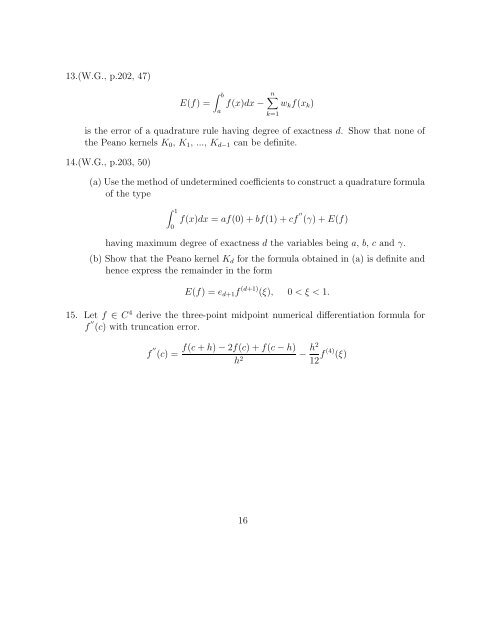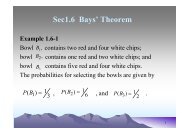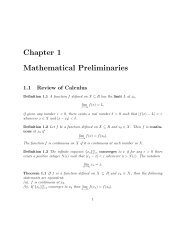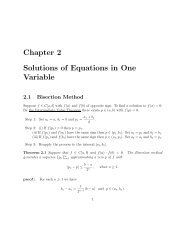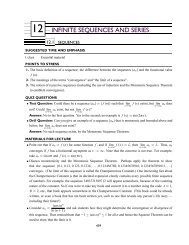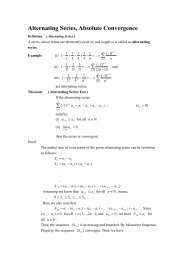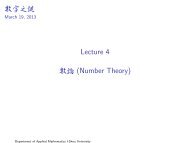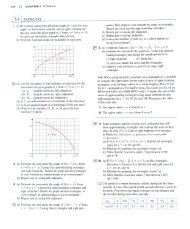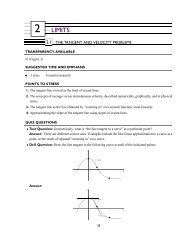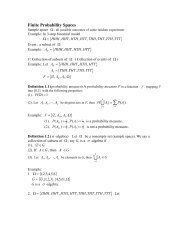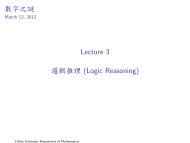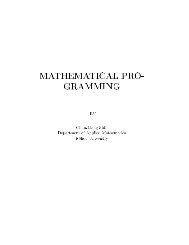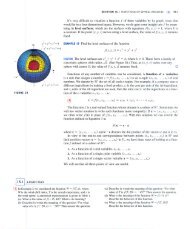Chapter 4 Numerical Differentiation And Integration
Chapter 4 Numerical Differentiation And Integration
Chapter 4 Numerical Differentiation And Integration
You also want an ePaper? Increase the reach of your titles
YUMPU automatically turns print PDFs into web optimized ePapers that Google loves.
13.(W.G., p.202, 47)<br />
∫ b<br />
n∑<br />
E(f) = f(x)dx − w k f(x k )<br />
a<br />
k=1<br />
is the error of a quadrature rule having degree of exactness d. Show that none of<br />
the Peano kernels K 0 , K 1 , ..., K d−1 can be definite.<br />
14.(W.G., p.203, 50)<br />
(a) Use the method of undetermined coefficients to construct a quadrature formula<br />
of the type<br />
∫ 1<br />
0<br />
f(x)dx = af(0) + bf(1) + cf ′′ (γ) + E(f)<br />
having maximum degree of exactness d the variables being a, b, c and γ.<br />
(b) Show that the Peano kernel K d for the formula obtained in (a) is definite and<br />
hence express the remainder in the form<br />
E(f) = e d+1 f (d+1) (ξ), 0 < ξ < 1.<br />
15. Let f ∈ C 4 derive the three-point midpoint numerical differentiation formula for<br />
f ′′ (c) with truncation error.<br />
f ′′ (c) =<br />
f(c + h) − 2f(c) + f(c − h)<br />
h 2<br />
− h2<br />
12 f(4) (ξ)<br />
16


